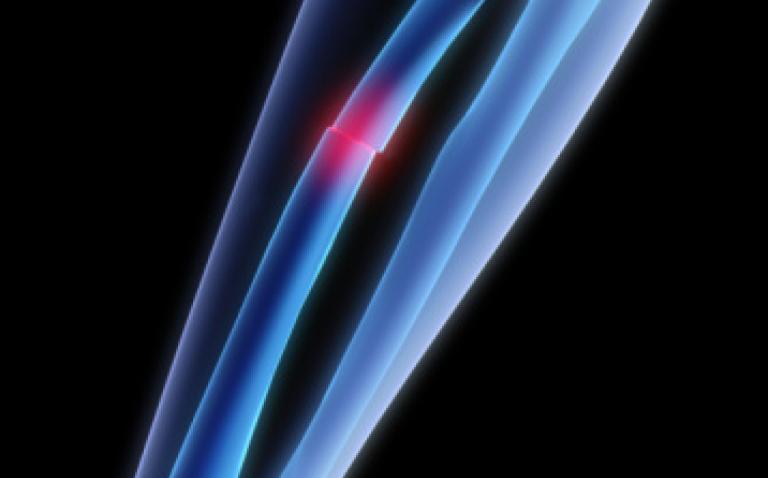New guidance from the National Institute for Health and Clinical Excellence (NICE) supports the use of an inexpensive ultrasound bone healing device that can replace surgery for thousands of patients with ‘problem’ fractures, saving the NHS millions www.healmybone.com .
Around 7.5% of fractures do not heal properly,(2) affecting around 50,000(1) people in the UK and roughly 10,000(1) undergo complex surgery to fix the bone using a metal plate. This may be combined with harvesting bone from the patient’s pelvis to graft it into the fracture site.
The guidance from NICE assessed the effects of a device called the EXOGEN® Ultrasound Bone Healing System, which uses a unique ultrasound signal to stimulate broken bones to heal naturally. Clinical studies have shown EXOGEN to have an equivalent 86% success rate as surgery.(3)
Patients using EXOGEN place an ultrasound probe on the skin for 20 minutes a day and the treatment, done at home, is entirely pain free and there are no known side effects. For application to patients with plaster casts, a hole is left in the cast over the fracture.
Manufactured by Bioventus LLC and distributed in the UK by Smith & Nephew, EXOGEN has been used worldwide since 1997. Thousands of patients have benefited from the product(4) but its use in the NHS has been inconsistent, with some doctors having to persuade hospital managers to fund it. However the new NICE guidance found that the surgery it replaces costs £1164 more.
Applying NICE’s calculations to the UK population as a whole, the savings could add up to £11.6 million, not including the lifestyle costs of patients being unable to work and often reliant on friends and family to get about.
Some patients live with a non-union fracture for several years waiting for healing to occur, blighting their lives and requiring them to make regular visits to fracture clinics.
NICE looked at 17 separate clinical studies involving over 1700 patients and concluded that the clinical benefits were clear, “the available clinical data on the effectiveness of EXOGEN for treating long bone fractures with non-union show high rates of fracture healing”.
NICE examined the product’s claims that there could be cost savings from using EXOGEN more widely in the NHS and found, “EXOGEN is cost saving compared with current management for the treatment of non-union”.
The device is used by many of the UK’s leading surgeons such as Angus MacLean the Senior Orthopaedic Consultant at Glasgow Royal Infirmary who says:
“By accelerating healing there is significant potential for this technology to save money for the NHS by reducing the need for surgery and returning patients to work more quickly than before. Cost savings and clinical effectiveness therefore make a potential ‘win-win’ situation for the NHS and the patient.”
Jeff Stonadge of Smith & Nephew’s Biologics and Clinical Therapies business comments “Living with a non-union fracture can mean years of pain and inability to lead a normal life. The guidance from NICE will help make it easier for thousands of patients to avoid surgery and make a quicker return to a normal lifestyle whilst reducing costs to the NHS.”
References:
- NICE costing template, applied to UK population drawn from 2001 Census
- Rubin et al. 2001
- Nolte PA, van der Krans A, Patka P, Janssen JMC, Ryaby JP, Albers GHR. Low-intensity ultrasound in the treatment of no nunions. J Trauma 2001;51:693-703.
- Company data on file Bioventus LLC










